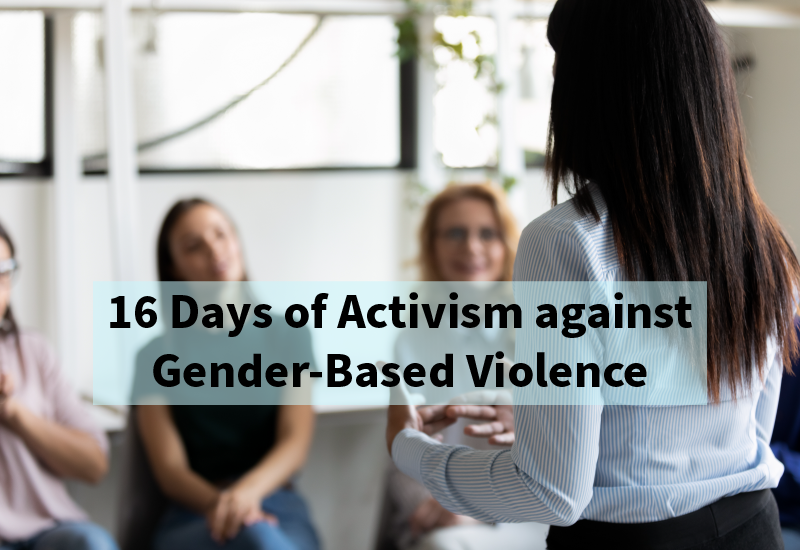Keep Workers Safe from Gender-Based Violence and Harassment
Gender-based violence and harassment is a workplace safety issue. It affects the mental and physical health of workers, disproportionately impacting women, people of color and LGBTQI+ people. When it comes to safety, prevention is key. That’s why during this year’s global 16 Days of Activism Against Gender-Based Violence, the Department of Labor is elevating some of the ways employers can prevent gender-based violence and harassment and support safe and healthy workplaces:
Assess your workplace for risks
Employers can support worker safety by assessing the risk of gender-based violence and harassment both in their industry and in their specific workplace. As the first U.S. National Plan to End Gender-Based Violence notes, some indicators considered high-risk for gender-based violence and harassment include:
- male-dominated fields (e.g., trucking, construction, scientific field research)
- low-wage and tipped employment (e.g., restaurant, janitorial, agricultural, and migrant workers)
- conditions of isolation (e.g., domestic workers).
In recognition of this, the Department of Labor’s new sample employment agreements for domestic workers, for example, recommends employers assess whether there is a potential risk of violence for the worker from someone in the home or neighborhood and develop a plan to mitigate this risk.
Reduce risks
Assessing your workplace for risks can help reduce the incidence of gender-based violence and harassment. For instance, when treating patients with known histories of violence or aggression you should assess the worksite to determine what safeguards are needed. Protections may include working in teams, panic buttons, and appropriate training. The Occupational Safety and Health Administration (OSHA) has developed guidance to help employers identify how to protect workers from violence. In addition, the EEOC’s Chart of Risk Factors for Harassment and Responsive Strategies can help identify ways employers can mitigate risks.
Implement a workplace policy
In consultation with workers and experts, employers can draft policies to prevent and respond to gender-based violence and harassment tailored to their specific workplaces. The Women’s Bureau recently highlighted some of the components of successful policies in construction, manufacturing, and clean energy jobs that can translate to other jobs. This includes ensuring that a zero-tolerance policy prohibiting gender-based violence and harassment that is widely communicated and accessible to all. It also includes establishing a process for reporting concerns that includes support for those impacted, protection from retaliation for reporting, active review of potential root causes, and clear consequences for gender-based violence, harassment and retaliation.
Provide regular training
Employers can also help prevent gender-based violence and harassment in their workplaces by providing training that helps workers of all levels understand what it is and how it impacts the world of work. Training is most effective when it is provided regularly, required for all workers and supervisors and co-created by workers to ensure all aspects of their experiences are centered.
Change the culture
Fostering a safe, respectful, and equitable workplace culture is paramount to preventing gender-based violence and harassment. Employers can help change workplace culture by increasing diversity and advancing policies that foster a more inclusive workplace (such as paid leave). Additionally, employers can proactively create a culture of respect. For example, Women’s Bureau grantee ANEW is implementing an innovative campaign designed to shift the culture of construction which can help prevent gender-based violence and harassment. And OSHA encourages employers through its Safe+Sound program to embrace safety and health as a core value, including the incorporation of less traditional health and safety concerns like gender-based violence and harassment, anti-retaliation programs and mental health into their health and safety management systems.
Additional resources
While there is no one-size-fits-all approach for preventing gender-based violence and harassment in the world of work, these are a few of the many steps employers can take to create safer and healthier workplaces for all workers. Additionally, OSHA has published resources, such as Guidelines for Preventing Workplace Violence for Healthcare and Social Service Workers. For more information , visit the Women’s Bureau and OSHA’s websites.
Wendy Chun-Hoon is the director of the Women’s Bureau. Follow the Women’s Bureau on Twitter/X at @WB_DOL. Doug Parker is the assistant secretary for the U.S. Department of Labor’s Occupational Safety and Health Administration. Follow OSHA on Twitter/X and LinkedIn.
Gates.Matthew…
Wed, 11/29/2023 – 15:22


Comments are closed.